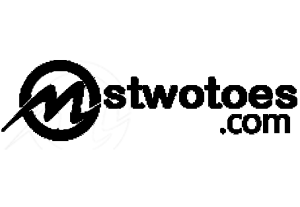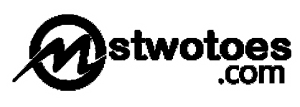A 401k is a retirement savings plan offered by employers in the United States. It allows employees to contribute a portion of their pre-tax salary to the plan, which is then invested in various financial instruments, such as stocks, bonds, and mutual funds. The primary goal of a 401k is to help individuals save for their retirement and build a substantial nest egg over time. In this article, we will delve into the details of what a 401k entails, how it operates, and its significance in securing your financial future.

What is a 401k?
A 401k is a tax-advantaged retirement savings plan established by the U.S. government under Section 401(k) of the Internal Revenue Code. It allows eligible employees to contribute a portion of their earnings into the plan, and these contributions are not subject to income tax until withdrawn during retirement. The contributions are often made through automatic payroll deductions, making it convenient for employees to save for their future.
The Benefits of Having a 401k
Tax Advantages: One of the major advantages of a 401k is its tax-deferred nature. The contributions you make to the plan are deducted from your taxable income, reducing your current tax burden. Additionally, the earnings on your investments grow tax-free until you start withdrawing them during retirement when you may be in a lower tax bracket.
Employer Match
Many employers offer a 401k matching program, where they contribute a percentage of the employee’s salary to the plan. This is essentially “free money” for the employee, encouraging them to save more for retirement.
Investment Options
401k plans typically offer a variety of investment options, ranging from conservative to aggressive. This allows employees to tailor their investments based on their risk tolerance and financial goals.
Portability
If you change jobs, you can often roll over your 401k into your new employer’s plan or an Individual Retirement Account (IRA) without incurring any tax penalties.
How Does a 401k Work?
Employee Contributions: As an employee, you can choose to contribute a portion of your salary to your 401k plan, up to the annual contribution limit set by the IRS. For 2023, the contribution limit is $20,500 for individuals under 50 and $27,000 for individuals aged 50 and above.
Employer Contributions
If your employer offers a matching program, they will contribute a certain percentage of your salary to your 401k, based on the amount you contribute. This employer match varies among companies, but common matching formulas include dollar-for-dollar matching up to a certain percentage of the employee’s salary.
Vesting Period
Employer contributions may be subject to a vesting period, during which you must remain employed with the company for a specific duration to fully own those contributions. Vesting schedules differ among employers, and it’s essential to understand your company’s policy.
Investment Options
Once your contributions are deposited into the 401k account, you can choose how to invest them. Most plans offer a selection of mutual funds, index funds, bonds, and company stock. It’s essential to diversify your investments to reduce risk.
Tax Implications
Contributions made to a traditional 401k are tax-deferred, meaning they are not taxed until you withdraw them during retirement. However, if you opt for a Roth 401k, your contributions are made with after-tax dollars, but your withdrawals during retirement are tax-free.
Withdrawals and Penalties
Withdrawals from a 401k are generally allowed after reaching the age of 59 ½ without incurring any penalties. However, if you withdraw funds before this age, you may be subject to an early withdrawal penalty of 10% in addition to income taxes.
Types of 401(k) Plans
Traditional 401(k)
- How It Works: Contributions are made pre-tax, reducing your taxable income for the year.
- Taxes: Withdrawals in retirement are taxed as ordinary income.
- Employer Matching: Often available.
- Best For: Employees who expect to be in a lower tax bracket in retirement.
2. Roth 401(k)
- How It Works: Contributions are made after-tax, meaning you pay taxes upfront.
- Taxes: Withdrawals (including earnings) are tax-free in retirement (if the account is held for at least 5 years and the participant is 59½ or older).
- Employer Matching: If offered, the employer’s contributions go into a Traditional 401(k) account (taxed upon withdrawal).
- Best For: People who believe their tax rate will be higher in retirement or want tax-free withdrawals.
3. Safe Harbor 401(k)
- How It Works: Similar to a Traditional 401(k), but employers must make mandatory contributions to employees’ accounts.
- Employer Matching: Required by law. Employers must either:
- Match 100% of contributions up to 3% of salary and 50% of the next 2%
- OR contribute 3% of an employee’s salary for all eligible employees, regardless of participation.
- Best For: Employers who want to avoid certain IRS compliance tests while offering strong benefits.
4. SIMPLE 401(k) (Savings Incentive Match Plan for Employees)
- How It Works: Designed for small businesses (with 100 or fewer employees).
- Employer Matching: Required; employers must either:
- Match 100% of contributions up to 3% of salary
- OR contribute 2% of salary for all eligible employees (whether they contribute or not).
- Best For: Small business owners looking for a low-maintenance retirement plan.
5. Solo 401(k) (Individual 401(k))
- How It Works: For self-employed individuals and business owners with no employees (except a spouse).
- Contribution Limits: You can contribute as both:
- Employee: Up to $23,000 (2024 limit, or $30,500 if 50+).
- Employer: Up to 25% of business income, with a total cap of $69,000 ($76,500 if 50+).
- Best For: Freelancers, self-employed individuals, or small business owners without employees who want high contribution limits.
6. Profit-Sharing 401(k)
- How It Works: Employers make discretionary contributions based on company profits.
- Employee Contributions: Can be paired with a Traditional or Roth 401(k).
- Best For: Businesses that want to reward employees based on company performance.
7. Tiered 401(k)
- How It Works: Allows employers to set different contribution match percentages for different groups of employees (e.g., executives vs. regular employees).
- Best For: Companies that want to offer higher benefits to top executives while staying compliant with IRS rules.
The Advantages of Starting Early
Starting a 401k as early as possible can provide several significant advantages:
Compound Interest
The power of compounding allows your investments to grow exponentially over time. By starting early, you give your money more time to grow, potentially leading to substantial gains in the long run.
Financial Security
A well-funded 401k can provide financial security during retirement, reducing reliance on government programs and enabling you to maintain a comfortable lifestyle.
Employer Match
Taking advantage of an employer match can significantly boost your retirement savings, setting you up for a more prosperous future.
Retirement Readiness
The earlier you start contributing to a 401k, the more prepared you’ll be for retirement, as you’ll have had more time to build a substantial nest egg.
401(k) Withdrawal Rules & Penalties
1. When Can You Withdraw From a 401(k)?
- Age 59½: Withdrawals are penalty-free, but traditional 401(k) withdrawals are taxed.
- Required Minimum Distributions (RMDs) at age 73: Traditional 401(k) holders must start withdrawing.
2. Early Withdrawal Penalties
- Before age 59½: 10% early withdrawal penalty + income taxes (exceptions apply, such as disability or first-time home purchase).
Maximizing Your 401(k) Potential
- Contribute as Much as Possible: Aim to contribute at least enough to receive the full employer match.
- Choose Appropriate Investments: Diversify your investments based on your risk tolerance and time horizon. Consider target-date funds for a hands-off approach.
- Review Your Investments Regularly: Monitor your portfolio and make adjustments as needed.
- Don’t Withdraw Early: Avoid early withdrawals to prevent penalties and maximize your retirement savings.
- Understand Plan Fees: Be aware of any fees associated with your 401(k) plan, as they can impact your returns.
Common 401(k) Mistakes to Avoid
- Not Enrolling: Missing out on free employer matching and valuable tax benefits.
- Withdrawing Early: Incurring penalties and jeopardizing your retirement savings.
- Investing Too Conservatively or Aggressively: Choosing investments that don’t align with your risk tolerance and time horizon.
- Ignoring Fees: Allowing high fees to eat into your returns.
- Failing to Rebalance: Not adjusting your portfolio to maintain your desired asset allocation.
Common FAQs About 401k Plans
Can I Contribute to a 401k and an IRA Simultaneously?
Yes, you can contribute to both a 401k and an Individual Retirement Account (IRA) simultaneously. However, there are annual contribution limits for each, so it’s essential to ensure you stay within those limits.
Can I Withdraw Funds from My 401k Before Retirement?
In most cases, you can withdraw funds from your 401k before retirement, but you may be subject to an early withdrawal penalty of 10% and income taxes. Some exceptions, such as hardship withdrawals, may allow penalty-free early withdrawals in certain situations.
What Happens to My 401k If I Change Jobs?
If you change jobs, you have several options for your 401k. You can leave it with your former employer, roll it over into your new employer’s plan or an IRA, or cash it out (not recommended due to potential tax implications).
Are There Any Limits on Employer Contributions?
While there is no limit on the percentage of salary an employer can contribute, there is a total contribution limit imposed by the IRS. For 2023, this limit is $61,000 for individuals under 50 and $67,500 for individuals aged 50 and above.
Can I Borrow Money from My 401k?
Some of the plans allow for loans, enabling you to borrow money from your account. However, borrowing from your 401k should be approached with caution, as it may impact your retirement savings and future financial security.
What is the Difference Between a Traditional 401k and a Roth 401k?
The primary difference between a traditional 401k and a Roth 401k lies in the tax treatment. Contributions to a traditional 401k are made with pre-tax dollars, while Roth 401k contributions are made with after-tax dollars. Withdrawals from a traditional 401k are taxed during retirement, while Roth 401k withdrawals are tax-free.
Conclusion
In conclusion, a 401k is an essential tool for securing your financial future during retirement. By understanding how it works, taking advantage of employer matches, and starting early, you can build a substantial nest egg that provides financial security and peace of mind in your golden years. Remember to diversify your investments and consult with a financial advisor to ensure you’re making the most of this valuable retirement savings option.

